“The Answer.” “The Answer?” said Deep Thought.
“The Answer to what?”
“Life!” urged Fook.
― Douglas Adams, The Hitchhiker’s Guide to the Galaxy
It took the Deep Thought supercomputer from Douglas Adams’ classic novel 7 million years to produce a rather disappointing answer to the ultimate question (in case you’re wondering, it was “42”). But you don’t have to wait that long. In today’s article, we’ll show you how you can use the power of AI to build a second brain that will help you answer all your questions in a jiffy.
- 🎓 Learn new things more effectively.
- 🎯 Set and track your personal and work goals
- 💡 Generate new, exciting ideas.
- 🗓️ Keep track of tasks, events, and deadlines.
- Or… impress your friends with useless facts. 😅
Here’s everything you need to know to get started.
🤖 AI and Knowledge Management
In the Middle Ages, monks would copy manuscripts by hand and maintain their own libraries, which were often the only repositories of knowledge assets. These days, we have unlimited access to information, with more data at our fingertips than we know what to do with.

But with great power comes great responsibility — or in this case, great overwhelm.
That’s where personal knowledge management (PKM) comes in. PKM is an entire discipline dedicated to strategies for identifying, capturing, storing, sharing, and curating information. But all that typing, rewriting, and curating is a lot of work. Enter AI.
AI-powered personal knowledge management tools can help you build a reliable PKM system and make your life a tad easier, not only when it comes to remembering stuff.
For example, natural language processing (NLP) algorithms can analyze your notes and extract important keywords and concepts. This can be especially helpful when taking notes on complex or technical subjects, where grasping the most critical ideas can be tricky.
But why stop there? 🤔
Machine learning algorithms can identify links and patterns in your notes, such as common topics or areas of interest, and automatically connect associated together. This way, you can easily navigate clusters of information and make you PKM system more efficient.
But before we get into all that, there is one more thing we need to explain.
🧠 What Is A Second Brain?
A second brain (lowercase) is a digital system designed to store all your notes, to-dos, projects, and ideas. It’s a comprehensive PKM approach that can help you keep track of your thoughts and knowledge in a centralized way. The term was popularized by productivity expert Tiago Forte who developed an entire methodology called Building a Second Brain (BASB) around it.
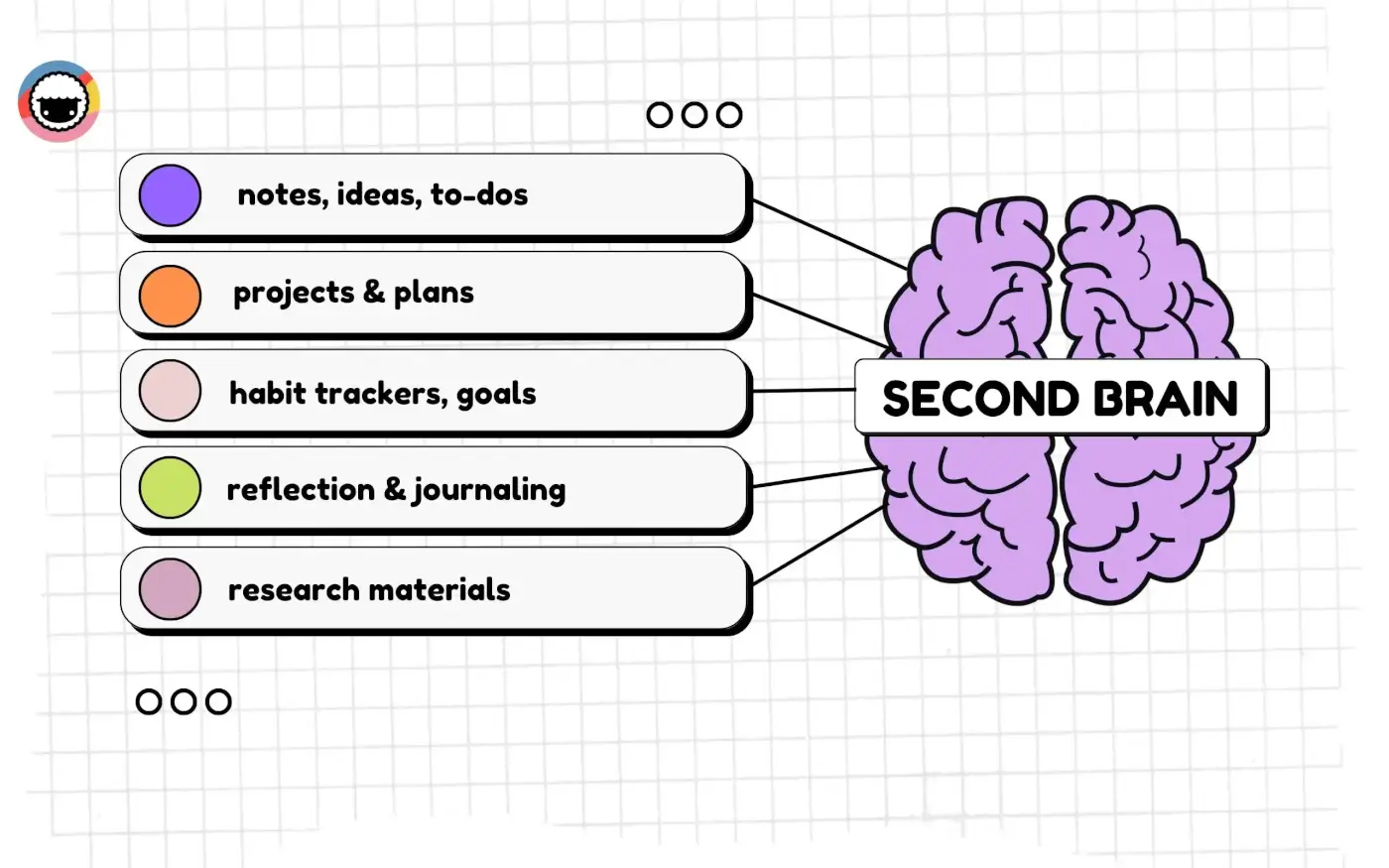
To build a second brain, you need a note-taking app that will let you quickly capture, format, organize, and retrieve information. “And the workflow?” It’s quite simple.
Whenever you come across an interesting piece of information or just need to set some priorities, you add a note to the system. You do the same with to-dos, journal entries, and other types of resources floating around. Once you’ve curated and organized everything into folders, you can use the aggregated knowledge assets as a starting point for your own work.
Tiago’s system is straightforward and effective. But that doesn’t mean we can’t make it even faster and more efficient with the help of artificial intelligence! 🤖 + 🧠
🐑 🤖 How Taskade AI Can Enhance the Building of Your Second Brain
Imagine having a virtual sidekick that can not only help you brainstorm new ideas but also improve your writing, prioritize tasks, and learn new things more effectively.
Meet Taskade AI, our smart writing assistant powered by the GPT-4 language model developed by OpenAI, the same technology that runs under the hood of ChatGPT.
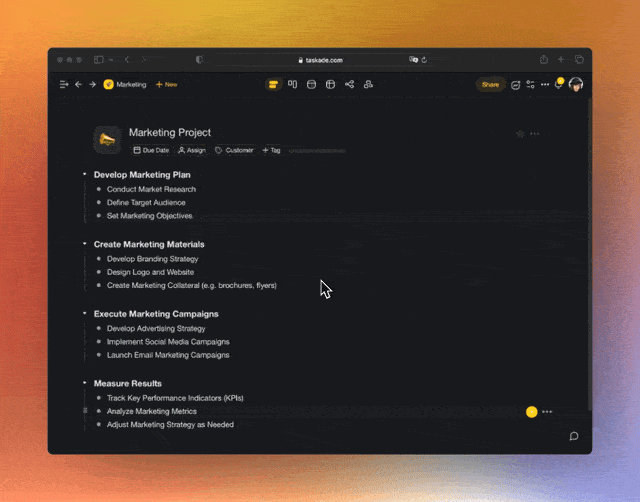
Unlike most AI tools out there, Taskade AI lives in your Taskade workspace and is fully integrated with the core workflow. Here’s how to use Taskade AI to build the ultimate second brain.
Amplify Knowledge Discovery
An effective second brain operates on the snowball effect — the more information you add to it, the more valuable and useful it becomes. But aggregating knowledge assets is a slow and tedious process. So let’s use the power of artificial intelligence to get off the ground faster.
Let’s say you’re trying to write a handful of formulas for your Excel / Google Sheets document. Unless you’re a spreadsheet guru, it’ll take some trial and error before you figure it out.
If you mess up a formula and end up with a spreadsheet full of errors, don’t sweat it — you can just spend the next hour trying to trace your steps back to figure out where you went wrong. Or…. you can ask Taskade AI to give you the right formulas (psst… we have templates for that).
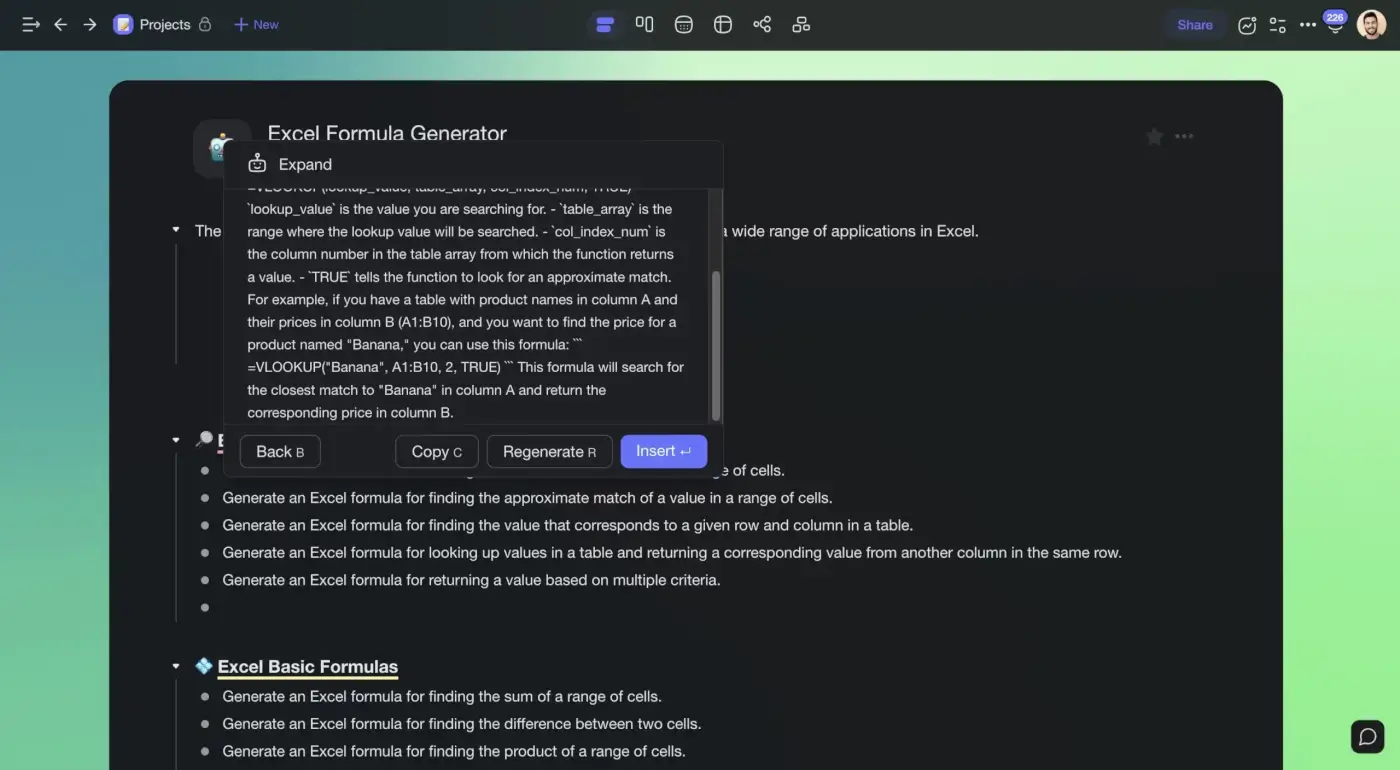
But the automation magic doesn’t end here. Taskade AI can also suggest relevant resources and topics you might want to explore after mastering a basic subject.
For example, if you’re learning about machine learning, Taskade AI will provide you with related concepts such as deep learning, natural language processing (NLP), and computer vision. You can even visualize the topic in our Mind Map view to easily navigate links between clusters.
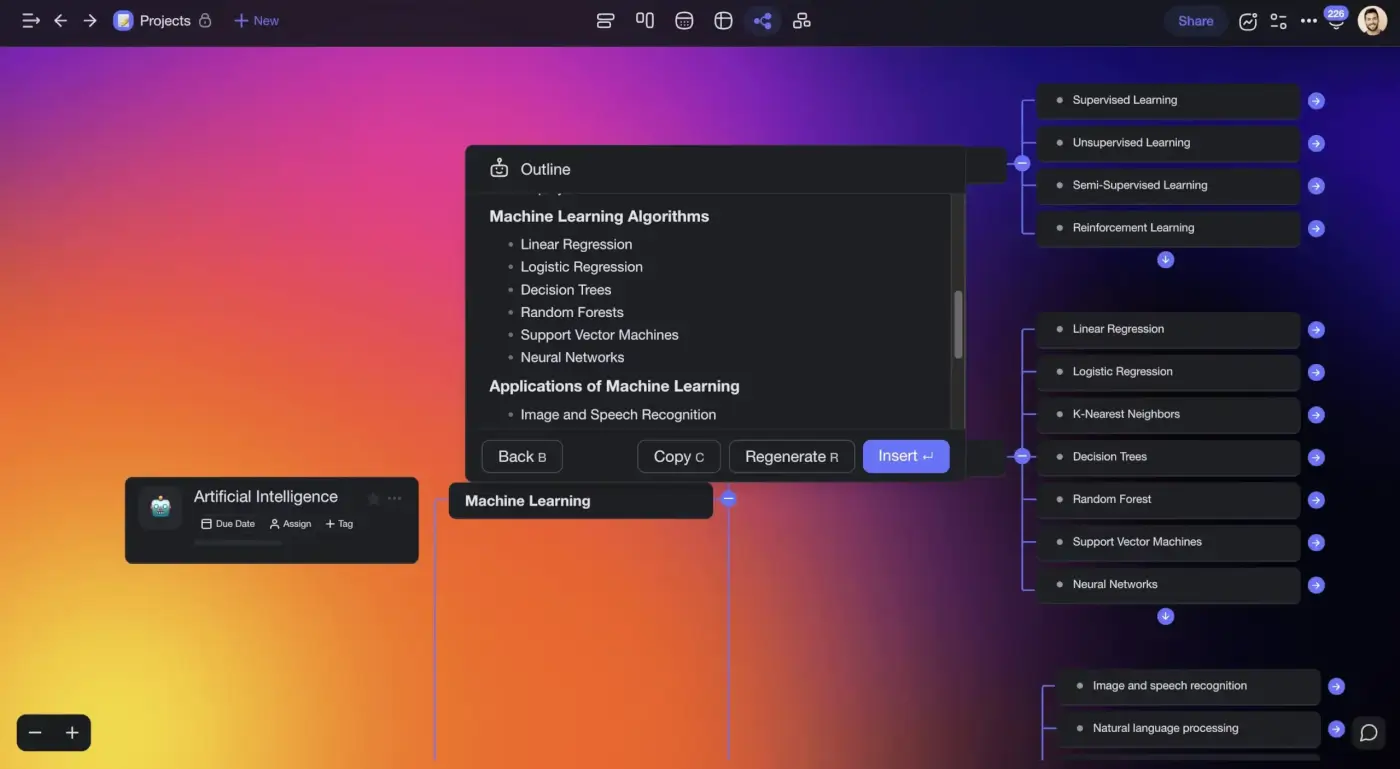
Break Big Rocks Into Pebbles
Remember how we said that a second brain can store much more than just notes?
You can use your second brain to collect to-dos, checklists, short-term and long-term goals, journal entries, reminders, and templates (erm… have you checked our template gallery?).
Taskade AI can assist you in creating a comprehensive to-do list, automatically suggesting and organizing tasks based on their context, priority, and other factors you can specify.
Let’s say you’re trying to learn a new language. So, where do you start?
If you’re completely new to the language, expect to spend some time planning things out. Or… simply use Taskade AI to map out the learning journey for you in seconds, complete with critical tasks you need to tackle first and less important sub-tasks that come after.
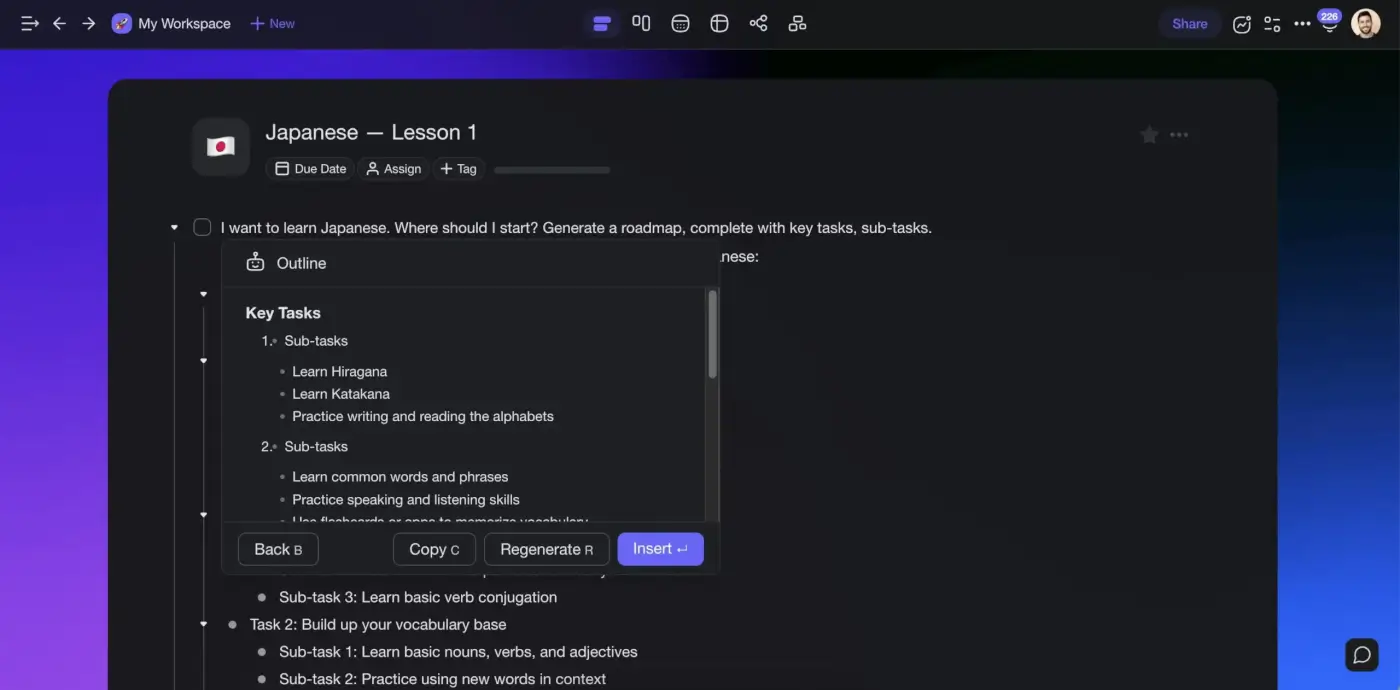
Let’s take it a step further.
Say you’re an intermediate learner trying to improve your German grammar skills. If you struggle with committing adjective endings to memory — in case you’re wondering, there are a total of 16 that depend on the case, gender, and number of the noun — Taskade AI can provide a breakdown of the rules for each case and gender, and suggest exercises for practicing them.
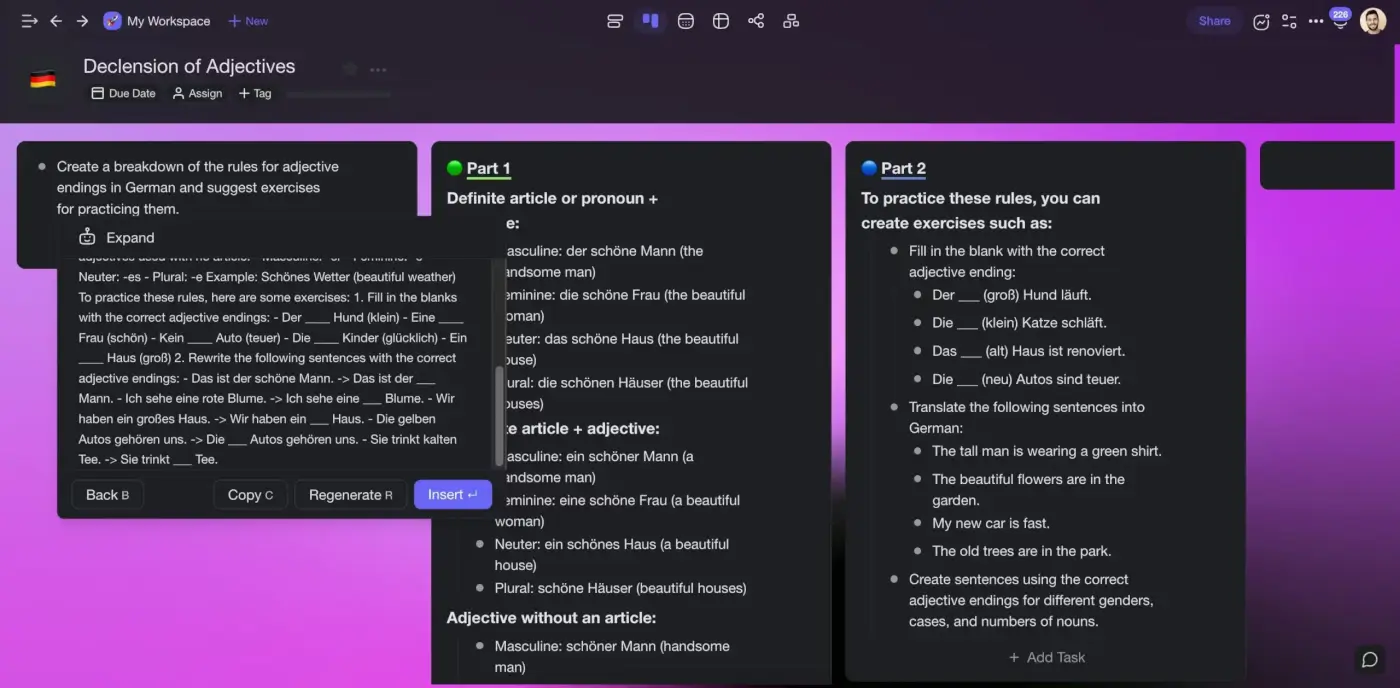
You can apply this neat trick to every single aspect of your second brain. By breaking complex, multi-level problems, concepts, and tasks into smaller components, you’ll have an easier time focusing on one piece at a time and improve your productivity in the long run.
Support the Creative Process
Did you know that the word “editor” comes from the Latin word “redactus,” which means “to reduce” or “to put in order”? We didn’t, so we used Taskade AI to find that out. 😅
But let’s get back to the point…
Automatic grammar and spelling checks have been around since the early 1970s. But let’s be real — even the best spell-checking tools can’t hold a candle to a professional editor who will turn your disorderly-combination-of-letters-and-words drafts into readable content.
Plus, not everyone can afford a full-time editor, which is where Taskade AI comes in.
With Taskade AI, you can expand your vocabulary and improve the quality of your writing with ease. The writing assistant can analyze your text and provide suggestions for synonyms and related words to diversify and enrich your writing. You can even conduct sentiment analysis and assess the emotional impact of your writing. Based on this analysis, Taskade AI can provide feedback and suggestions to help you make your writing more engaging and impactful.
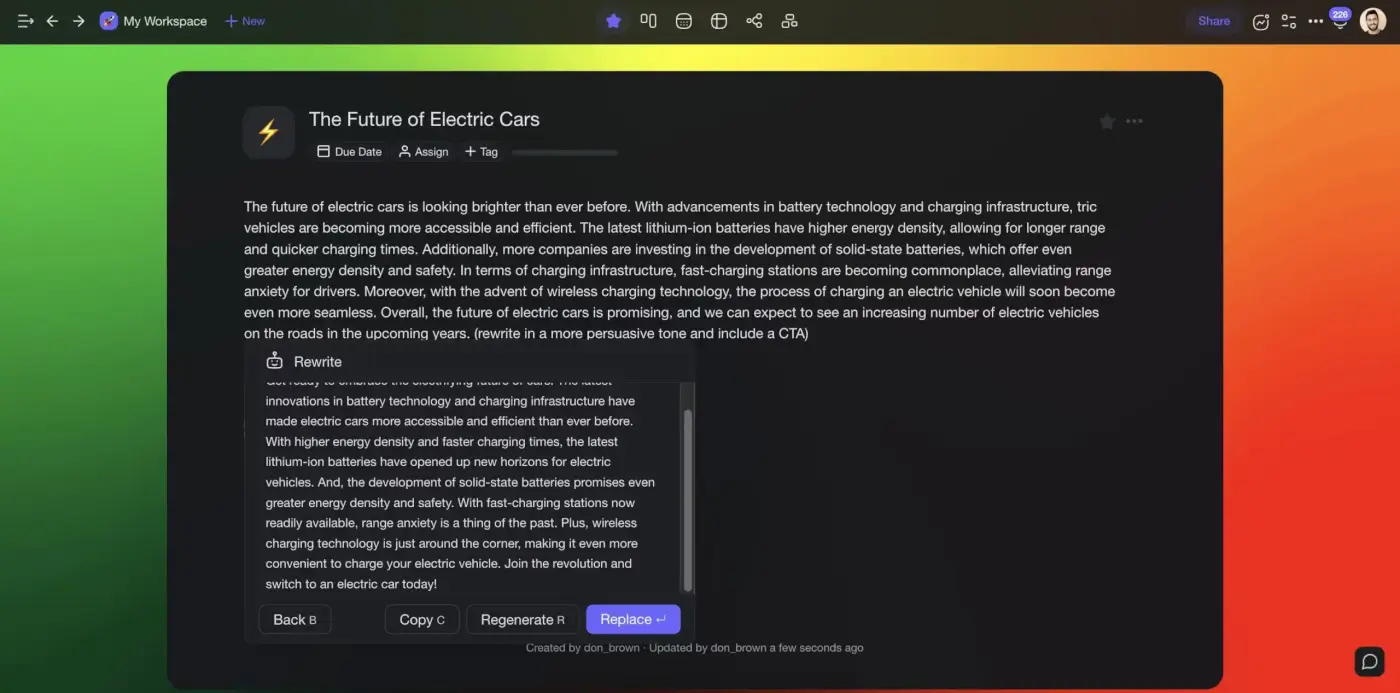
So, whenever you want to move to the “creative” part and leverage what’s already inside your second brain to create new value, just ask Taskade AI for help.
“And what if I get stuck?” Taskade will help you get back on track with automated content generation. Ask the assistant to generate an outline for your document or use it to write the next sentence or paragraph from scratch for an extra dose of inspiration.
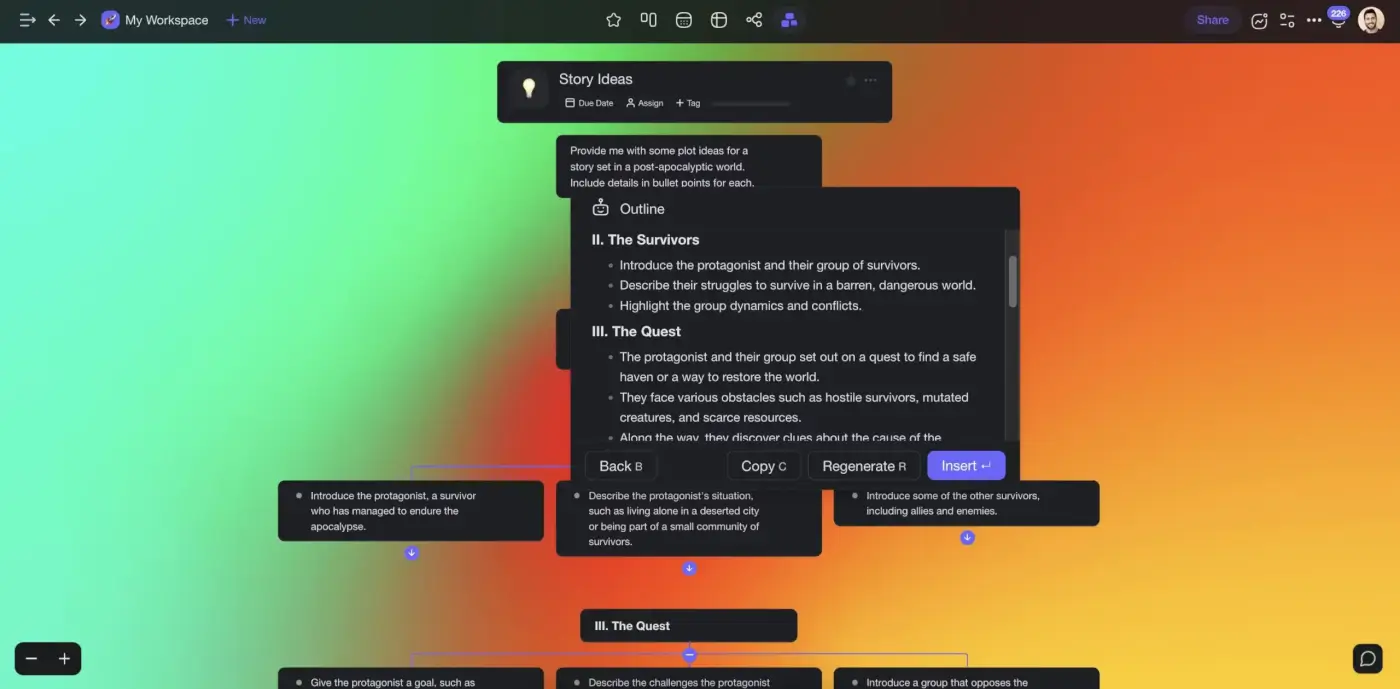
Want to learn more about the concept of a second brain? Be sure to check our Building a Second Brain review where we break down Tiago Forte’s methodology.
🔎 Boost Data Analysis and Context Comprehension
Research is the bread and butter of writing, especially if you’re building a second brain (duh). But unless you’re a speed-reader, going through a 200-page long document to extract a few key points may seem like searching for a needle in a haystack — while blindfolded, in a snowstorm.
The good news? AI can help with that too.
Whether it’s PDF files, Word documents, CSV spreadsheets, or plain text, Taskade acts as your personal AI assistant and extracts the hottest insights in seconds. Simply upload attachments directly to your Taskade project and use AI for context comprehension and data analysis.
And here’s the best part — Taskade aggregates all attachments inside the Media Manager that acts as your personal knowledge hub and allows you to instantly start a Q&A session.
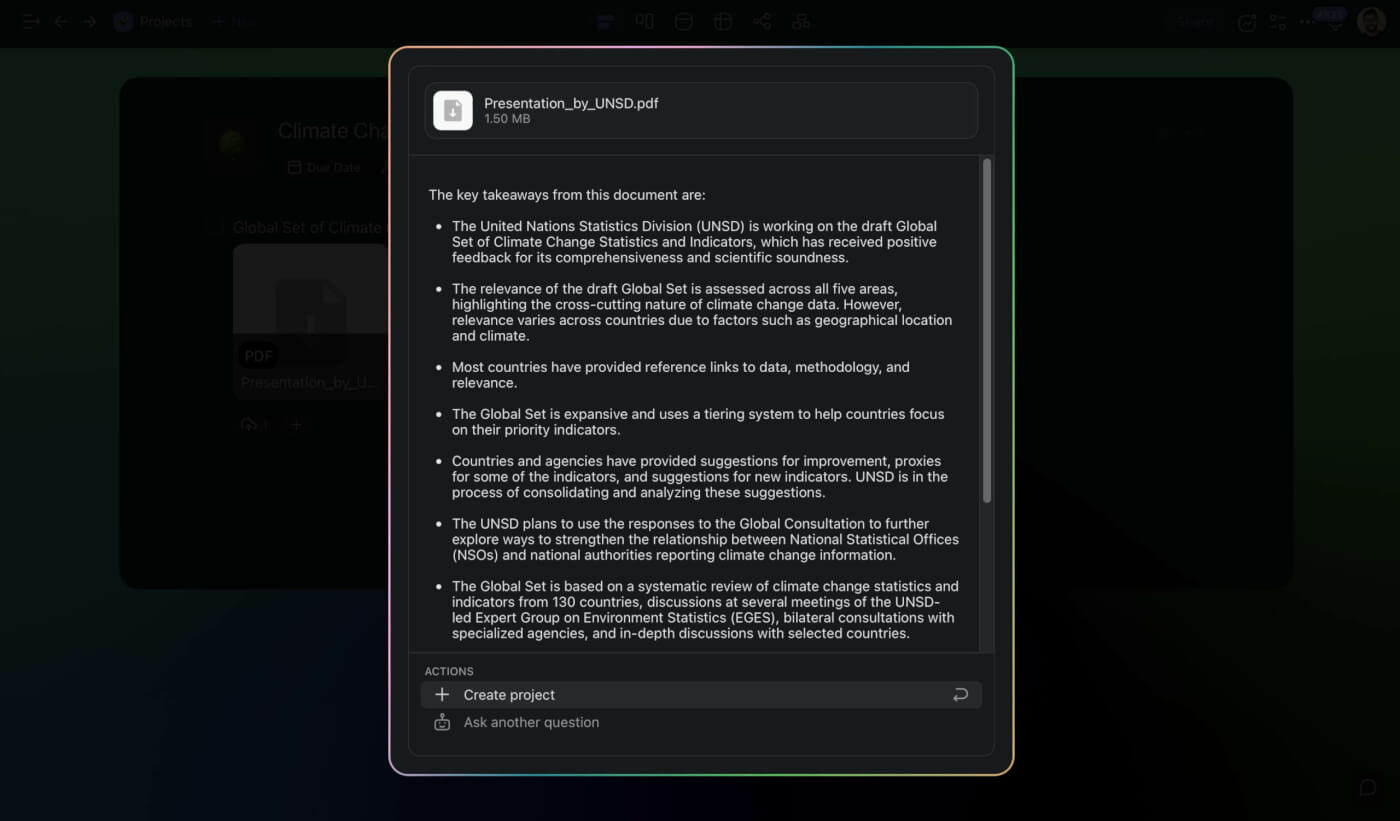
🚀 AI Is the Future of PKM Systems
The ongoing AI revolution is an excellent opportunity to reevaluate existing methodologies and personal knowledge management tools to predict how they will change in the near future.
At Taskade, we’re already working on some exciting new features that will help us answer these questions and make your second brain experience even better.
Get ready for intelligent note linking, autonomous task management, and smart task prioritization features that will take your productivity to the next level. And that’s not all! We have a few other surprises up our sleeves, so stay tuned for updates!
🤖 Custom AI Agents: Develop a team of AI agents to automate research and knowledge management across all your projects.
🪄 AI Generator: Automatically generate a structure for your second brain — outline notes, plan projects, and set up workflows in seconds.
✏️ AI Assistant: Use /AI commands integrated into the project editor to format notes, develop ideas, and find peripheral concepts.
🗂️ AI Prompt Templates Library: Explore AI prompts designed for content generation, project management, marketing, and more.
And much more…
💬 Frequently Asked Questions About Leveraging AI in Building a Second Brain
Are there other ways to integrate automation into existing PKM workflows?
Will AI-powered tools help personalize our learning experience?
Can AI-assisted knowledge management open up new ways of collaboration?
How best to leverage artificial intelligence for memory enhancement?
What tools are available for building a second brain with AI?
How can AI help in building a second brain?





 What Is an SOP Generator and Why Your Business Needs One
What Is an SOP Generator and Why Your Business Needs One 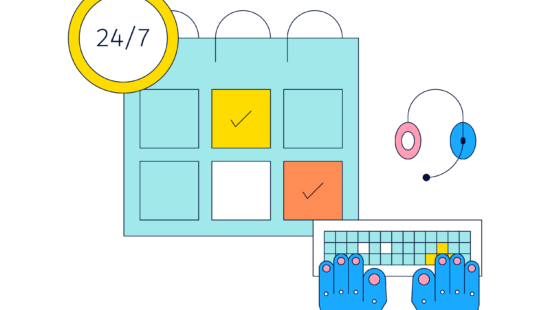 The Best Evernote Alternatives for Your Note-Taking Needs in 2025
The Best Evernote Alternatives for Your Note-Taking Needs in 2025  10 Top AI Tools For Knowledge Management
10 Top AI Tools For Knowledge Management 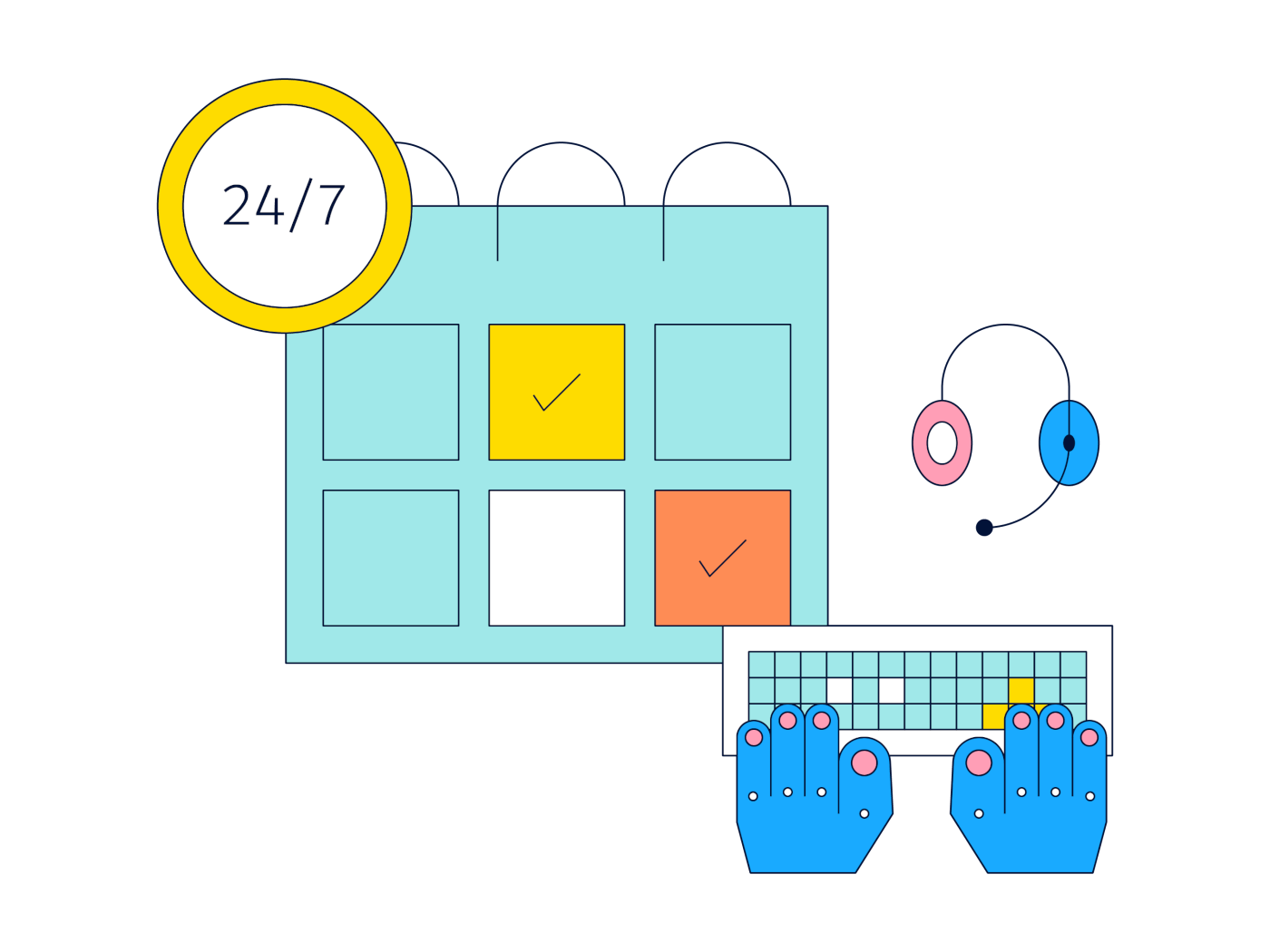 8 Top AI Note-Taking Apps in 2024: Research, Outline, and Think Faster
8 Top AI Note-Taking Apps in 2024: Research, Outline, and Think Faster  The Power of Connected Thoughts: How Linking Your Thinking Can Improve Your Learning and Retention
The Power of Connected Thoughts: How Linking Your Thinking Can Improve Your Learning and Retention 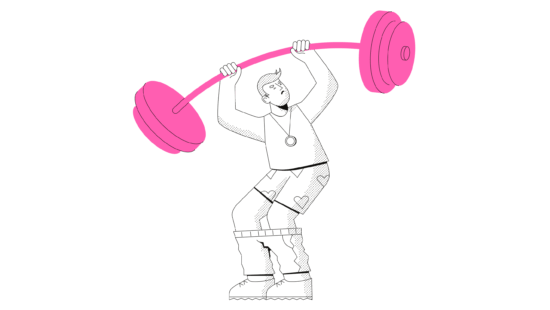 The PARA Method: Get More Done With This Productivity Framework for Organizing Your Life
The PARA Method: Get More Done With This Productivity Framework for Organizing Your Life